Breed of the Month – The Great Dane
[ad#Commission Junction Total Pet Supply small]
THE GREAT DANE
Gastric Dilatation and Volvulus (Torsion of the Stomach and Bloat)
The Great Dane, also known as German Mastiff or Danish Hound, is one of the world’s tallest dog breeds, often referred to as the “Apollo of all breeds.” The current world record holder, George the Giant, measures 109 cm (43 in) from paw to shoulder and 220 cm (7.2 ft) from head to tail. (1) Although Danes originally hunted wild boar, today they are companions, show dogs and protectors. The Great Dane is a wonderful family dog, affectionate, loyal, devoted and a good guardian. (4)
ORIGINS
The breed as we know it today originated in Germany, (4) but Great Danes have a long history. “Dane-type” dogs may have originated in Egypt, Rome, or Greece as(3) Greek coins from 36 BC carry the image of a dog similar to the Great Dane. Drawings of dogs resembling Great Danes have been found on Egyptian monuments dating back to 3,000 B.C. and artifacts in Babylonian temples from about 2,000 B.C. also depict Dane-like dogs. Tibetan literature from 1121 B.C. describes Dane type dogs as well. (4)
Similar medieval boar hound or Mastiff-type dogs dogs were used by Asians known as the Alans who invaded Germany, Italy, and Spain in 407 AD. (2)(3)They brought the dogs with them, and they showed great strength with the ability to kill bears and wild boars, and thus the Germans began to selectively breed them. (3) The breeds selected to breed the Dane may have included the Irish Wolfhound, Old English Mastiff, the Greyhound or Tibetan Mastiff. (4)
In Germany they became the country’s national dog in 1870. In 1880, it was agreed that the breed developed by the Germans was a distinct breed and would therefore be known as the Deutsche Dogge (German Dog). During the mid-1800’s fanciers in the USA began importing dogs from Germany and, by 1891, the Great Dane Club of America had been formed. (4) Most English speaking countries use the name “Great Dane”. In France it is known as the “Dogue Allemand” or the “Danois,” In Holland, the “Duitse Dogge” or “Deense Dogge” and in Italy it is named the “Alano.” (4)
APPEARANCE
Male: Height – 32″(81 cm) or more at the shoulder. (Not less than 30″ (76cm))
Female: Height – 30 ” (76 cm) or more at the shoulder. (Not less than 28″ (71cm))(3)
Weight: Male — 140 to 175 pounds (minimum 120 pounds) (1)(3)
Female — 110 to 140 pounds ( minimum 100 pounds)(1)(3)
The American Kennel Club has dropped the minimum weight requirement from its standard. (1)
The Great Dane is a Giant Breed. The male is larger than the bitch with a bigger frame and heavier bone and the dog is is well proportioned to his height.(4) They are elegant and noble with a powerfully muscular body and long neck. The head is rectangular with a long face and large nasal canal. The snout is box like and the expression, intelligent and lively with round, dark eyes and their teeth are well-developed, and close in a scissors bite.(3)
Full height is reached at 12 to 15 months of age, but they only mature at three years of age. (4) In the ratio between length and height, the Great Dane should be square. (1) Larger dogs are more valued. (2)
Despite their large size, Great Danes are graceful dogs. (3)As described by the American Kennel Club, “The Great Dane combines, in its regal appearance, dignity, strength and elegance with grand size and a well-formed body. One of the largest working breeds, it never appears ugly.”(1) Their entire body is long and muscular, their legs strong, feet round with dark nails. (3) They have a medium length tail. (2)
In some countries, the ears may be cropped so they are pointed and stand upright.(3) Great Danes have naturally floppy, triangular ears. In the past, when Great Danes were commonly used to hunt boars, cropping of the ears was done to prevent the dog’s ears getting shredded by the boars long tusks. (4) Now that Danes are mostly companion animals, cropping is only done for traditional and cosmetic reasons. The practice is still common in the USA. In some European countries such as the United Kingdom, Ireland, Denmark, Germany, parts of Australia, and in New Zealand, the practice is banned, or controlled to only be performed by veterinary surgeons.(1)
Great Danes have a short, glossy, close-cropped coat, (3) and are classified based on coat color:·
Black– The coat is glossy black.(3)White markings at the chest and toes are not desirable and considered faults.(1)
Blue– The coat color is a pure steel blue.(3)White markings at the chest and toes are undesirable and considered faults.(1)
Brindle– The coat is a chevron-stripe pattern of fawn and black. (3)Often also they are referred to as having a tiger-stripe pattern. (1)
Fawn– The coat is a dusty, yellow gold with a black face mask. (3)Black should appear on the eye rims and eyebrows, and may appear on the ears.(1)
Harlequin– The base coat is pure white. Patches of black are evenly distributed across the whole body.(3) The base color is pure white with black torn patches irregularly and well distributed over the entire body; a pure white neck is preferred. The black patches should never be large enough to form a blanket, nor so small as to give a stippled or dappled effect.
Eligible, but less desirable, are a few small grey patches or white with single black hairs showing through, giving a salt and pepper or dirty effect. (Has a link to deafness and blindness as Merle and white Danes.)(1)
Mantle (or Boston)– The coat is black and white (3) with a solid black blanket extending over the body; black skull with white muzzle; white blaze is optional; whole white collar preferred; a white chest; white on part or whole of forelegs and hind legs; white tipped black tail. A small white marking in the black blanket is acceptable, as is a break in the white collar.(1)(2)
Spots and markings on show dogs are allowed in specific places only over the body. Dark coated Danes have dark eyes while light coated Danes have lighter eyes. (2) Other non show coat colors occur, (3) including white, fawnequin, merle, merlequin, fawn mantle, and others. Some breeders may try to charge more for puppies of these “rare” colors. Breeding of white and merle Danes is controversial, as these colors may be associated with genes that produce deafness.
Although they cannot be shown, white or merle Danes can usually still be registered as pedigree dogs. (1)
BEHAVIOR
Commonly called the “Gentle Giant”, the Great Dane possesses a loving demeanor.(3) The Great Dane is a calm, dependable and well-balanced dog. He is spirited, courageous, always friendly and never timid or aggressive. He is loyal to his family, but has a natural suspicion toward strangers, making him a good watchdog. (The size helps as well) Great Danes reared with children are usually very gentle; however, due to their size, accidental injuries can occur and small children should never be left unattended. (4)
They are fine with other dogs, other animals and humans, although, when feeling threatened, have been known to attack unfamiliar humans. (1) The Dane loves people and attention and loves to play. He is a great family dog as it adopts all members of the family and is very patient and gentle with smaller dogs he is raised with from puppyhood. Because of his great adult size, obedience training needs to be started before he is six months old and continue through the first two years of his life. He also needs to be taught not to lean on people!! Some Danes can be difficult to train, but most simply want to please their owners.
They only bark as the occasion warrants. Because of their power, stamina and long legs, they can be completely out of sight almost instantly if allowed to run free, so should always be kept on a leash. They are not suited to be outdoors all the time as they need to be with people. (2) Very rarely are Great Danes aggressive, but they can be competitive toward other dogs of the same sex. Great Danes are also capable of becoming terrific tracking or carting dogs. (3)
CARE
Great Danes need daily walks to remain healthy. However it is important not to over exercise this breed, particularly when young. Great Dane puppies grow very large, very fast, which puts them at risk of joint and bone problems. Because of a puppy’s natural energy, owners should take steps to minimize activity while the dog is growing.(1) Great Danes continue to grow (mostly gaining weight) longer than most dogs, only maturing at three years of age. (1) Although they love running, they should not be used as a jogging partner until some time after one year of age.
As adults, a long daily walk or plenty of running and fetching inside a fence will suit them. Young Danes have lots of energy, but as they age, they becomes quiet indoors and can even live in an apartment. Note: Even highly obedience-trained Danes run without listening to commands and often end up hit by a car. (2)
Grooming is easy with this breed. Trim nails monthly. Bathing is quite a chore, so use of a professional groomer if that is needed will help. This breed is an average shedder and they (2) should be combed with a firm bristle brush and dry-shampooed as necessary. Daily grooming is good idea if one wants to avoid the massive chore of giving a Great Dane a bath. (3)
Because of the Great Dane’s large size, he does best in spacious environments where he has room to run and play. If a Great Dane is properly exercised on a regular basis, he can tolerate a house with a smaller backyard or an apartment. Great Danes have a tendency to be inactive indoors, so it’s important for their health to spend time outside each day. (3)
HEALTH
Great Danes, like most giant dogs, have a fairly slow metabolism. This results in less energy and less food consumption per pound of dog than in small breeds. By nature, Great Danes are not a long-lived breed. Some Great Danes can live for 12-13 years, but their average life span is less than 10 years. This breed should have vet check-ups every six months instead of the normal one year.(1)
Great Danes have many potential health problems, but some can be prevented. Buying a Great Dane from a responsible breeder that has OFA/CERF screened dogs, healthy dogs and dogs that have correct conformation is the first step. Good conformation creates a healthy dog. A dog with a sway back, for example, will have back problems. (3) Ensure that the prospective puppy’s parents have all health clearances. Breeding of any dog should not be done until after they have been proven to be free of evidence of significant hereditary diseases. The Great Dane Club of America (GDCA) Code of Ethics strongly recommends that all breeding dogs be x-rayed prior to breeding and declared free of hip dysplasia by a knowledgeable Veterinarian or the OFA. In addition, any and all technology available should be used to screen all breeding dogs for any known problems within the breed (e.g. OFA, cardiac check, thyroid check, vWD, PRA, etc.) (4)
Gastric Dilatation and Volvulus (Torsion of the Stomach and Bloat)
This is a health problem common to large breeds and is a painful distention and twisting of the stomach. This is a critical condition affecting Great Danes and other deep-chested breeds, and which may cause death if not quickly addressed. Drinking large amounts of fluid in a short period of time can provoke GDV. It is a commonly recommended practice for Great Danes to have their stomachs tacked (Gastropexy) to the right abdominal wall if the dog or its relatives have a history of GDV, though some veterinary surgeons will not do the operation if the actual sickness has not occurred. Elevated food dishes are often believed to help prevent GDV by regulating the amount of air that is inhaled while eating, although one study suggests that they may increase the risk. Refraining from exercise or activity immediately before and after meals may also reduce risk, although this has not been validated with research. Feeding twice instead of once daily may also help prevent the condition.
Signs that GDV may have occurred include, but are not limited to, visible distension (enlargement of the abdomen) and repeated retching with repeated non-productive attempts to vomit. GDV is a condition that is distinct from another condition referred to as bloat; but bloat may develop into GDV. Seek immediate veterinary evaluation should be sought if a dog demonstrates signs of GDV. (1) It has a high fatality rate unfortunately, as the twisted stomach releases dangerous chemicals into the bloodstream that can affect the heart. According to the Great Dane Club of America, Bloat is the number one killer of Great Danes and Great Danes are the number one breed at risk for bloat. Bloat is a condition caused by a twisting of the stomach and thus trapping the stomach contents and gases resulting in a rapid swelling of the abdomen accompanied by pain and eventual death if untreated. (4)
Hip and Elbow Dysplasia
Being such a large breed, hip and elbow dysplasia are huge concerns. Make sure the parents are OFA certified. (2) Canine Hip Dysplasia is a very common disorder in many large breed dogs and can result in debilitating orthopedic disease of the hip. It is caused when the femoral head does not fit properly in the hip socket, causing instability of the joint. Over time, this malformation can cause degenerative joint disease which causes increased pain and immobility.(4)
Cancer
Tumors of the bone – for example Osteosarcoma are common in large breed dogs. Osteosarcoma is a highly malignant bone cancer that spreads quickly. Early symptoms include a lameness that does not respond to anti inflammatories, a slight puffiness and heat of a joint, and extreme pain when a joint is manipulated. They often occur on the lower radius in the forearm.
Great Danes can suffer from a variety of Cancers. The two forms most commonly seen in the Great Dane are Osteosarcoma and Lymphoma. These along with Heart Disease and Bloat are the leading cause of death in the Great Dane.(4)
Heart Disease
Heart disease is common in Great Danes. (2) Dilated cardiomyopathy (DCM), Tricuspid Valve Dysplasia (TVD) and many congenital heart diseases are commonly found in the Great Dane, leading to its nickname of the Heartbreak breed. (1) (4). See our article on Dilated Cardiomyopathy and valvular disease
Tail Injuries
Tail injuries are also common.(2)(3) Dogs often knock the ends of their tails which causes bleeding wounds which struggle to heal as the dogs remove bandages and keep knocking their tails on objects.
Blindness and Deafness
Great Danes also suffer from several genetic disorders specific to the breed. For example, if a Great Dane lacks color (is white) near its eyes or ears then that organ does not develop and usually the dog will be either blind, deaf, or both. (1)
Hypothyroidism
Canine Hypothyroidism is the most commonly diagnosed hormonal disease found in dogs. The term hypothyroidism simply means the underproduction of thyroxin, the hormone produced by the thyroid gland.(4)
Wobblers Syndrome
Wobbler’s Syndrome (CVI) — (CVI: Cervical Vertebral Instability) — Symptoms of Wobbler’s Syndrome in the Great Dane usually appear between the age of 3 and 18 months, and include weakness, uncoordination and confusion (ataxia). These symptoms generally worsen over several months and, with time, an affected dog may develop a stiff, high-stepping, and exaggerated gait that gradually worsens. This is a painful condition caused by an abnormality of the spine. It is a chronic, progressive disease and, without treatment, the dog’s condition will deteriorate. (4)
FAMOUS DANES
* Scooby-Doo, the famous Hanna-Barbera character, was based on a Great Dane by animation designer Iwao Takamoto. Takamoto based his illustrations on sketches given to him by a Hanna-Barbera employee who bred this dog. Scooby closely resembles a Great Dane, although his tail is longer than the breed’s, bearing closer resemblance to a cat’s tail.

* Marmaduke is a newspaper comic strip drawn by Brad Anderson from 1954 to the present day. The strip revolves around the Winslow family and their Great Dane, Marmaduke.
* In The Guardian (novel) by Nicholas Sparks the main but tragic hero is Singer, a Great Dane, acting as the guardian of a true love. (1)
WORKING DOGS
This breed is used for tracking, watchdog duties, and carting. (2)
BREED SOCIETIES
British – Great Dane Breeders and Owners Association, Great Dane Club
US – Great Dane Club of America – www.gdca.org
Rescue Link: www.gdca.org/rescue.htm (2)
[ad#Commission Junction Pet Street Mall]
REFERENCES
1. http://en.wikipedia.org/wiki/Great_Dane
2. http://www.trainpetdog.com/Great-Dane/about-great-dane.html
3. http://www.greatdogsite.com/breeds/details/Great_Dane/
4. http://www.canadasguidetodogs.com/greatdane.htm
5.http://www.danesonline.com/pic.shtml
6.http://www.petplace.com/dogs/gastric-dilatation-volvulus/page1.aspx#
7.http://dogs.about.com/od/dogandpuppyhealth/qt/GDV.htm
8.http://www.cherriton-danes.com/terry.html
[ad#Commission Junction Huddle]

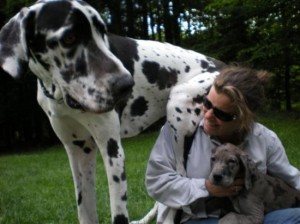




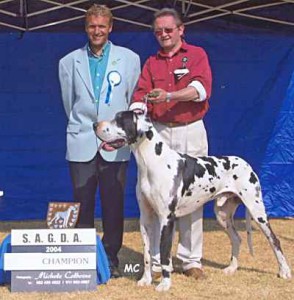
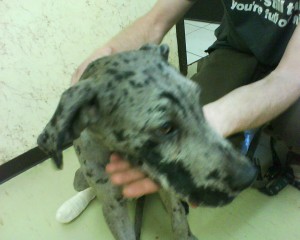
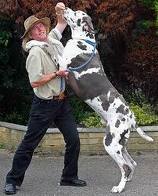
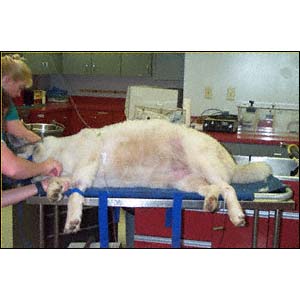
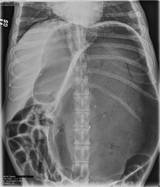
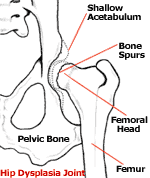



Leave a Reply
You must be logged in to post a comment.